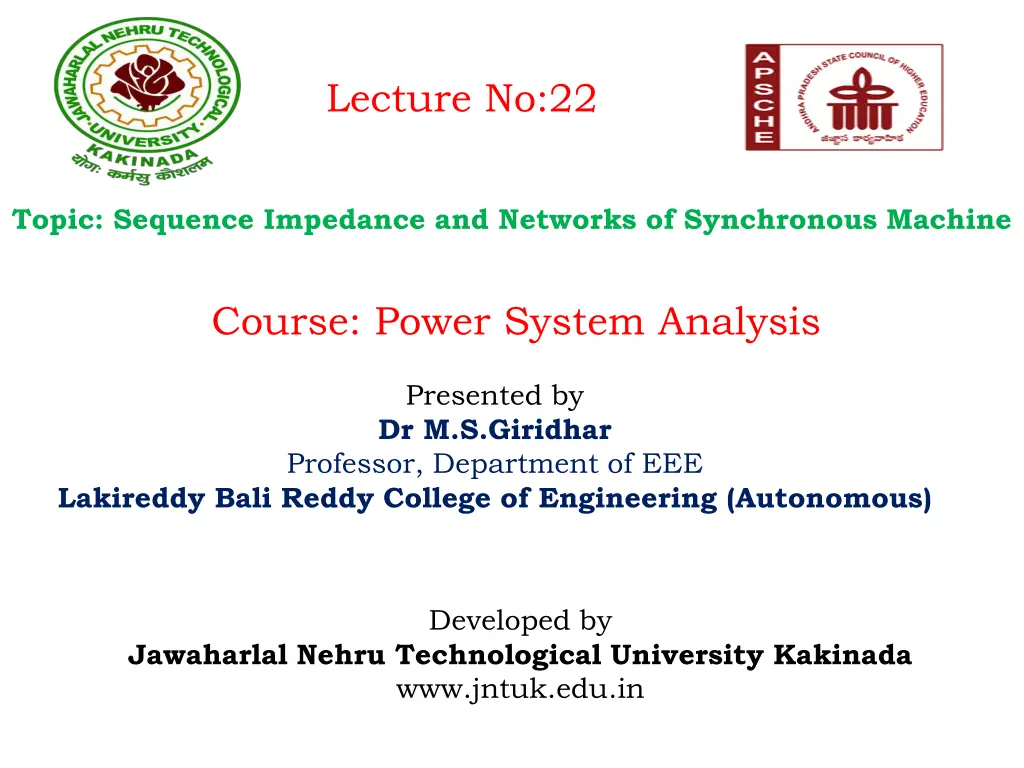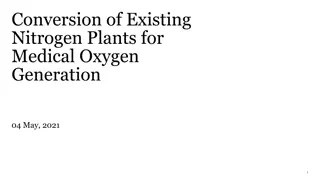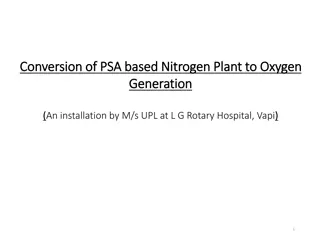
Understanding Sequence Impedance and Networks of Synchronous Machines
Explore the concept of sequence impedance in synchronous machines, including positive, negative, and zero sequences, along with their impacts on machine operation and performance. Learn about the symmetrical networks of generators and typical values of sequence impedances in this detailed course presentation by Dr. M.S. Giridhar.
Download Presentation

Please find below an Image/Link to download the presentation.
The content on the website is provided AS IS for your information and personal use only. It may not be sold, licensed, or shared on other websites without obtaining consent from the author. If you encounter any issues during the download, it is possible that the publisher has removed the file from their server.
You are allowed to download the files provided on this website for personal or commercial use, subject to the condition that they are used lawfully. All files are the property of their respective owners.
The content on the website is provided AS IS for your information and personal use only. It may not be sold, licensed, or shared on other websites without obtaining consent from the author.
E N D
Presentation Transcript
Lecture No:22 Topic: Sequence Impedance and Networks of Synchronous Machine Course: Power System Analysis Presented by Dr M.S.Giridhar Professor, Department of EEE Lakireddy Bali Reddy College of Engineering (Autonomous) Developed by Jawaharlal Nehru Technological University Kakinada www.jntuk.edu.in
Sequence Impedance and Networks of Synchronous Machine When the machine carries positive sequence currents, (balanced mode of operation) the armature reaction field causes the positive sequence currents rotates at synchronous speed in the same direction as the rotor. The Machine equivalently offers a direct axis reactance whose value reduces from X d and transient reactance of X dwhen the short circuit current progresses in time. Z1 = jX d (if 1 cycle (20ms) transient is of interest) Z1 = jX d (if 3-4 cycle (20ms) transient is of interest) Z1 = jXd (if steady state value is of interest) Va1 = Ea Z1Ia1
Negative sequence Impedance and network With the flow of negative sequence currents in the stator a rotating field is created which rotates in the opposite direction to that of positive sequence field, and at double the synchronous speed w.r.t rotor. Currents at double the stator frequency are induced in the rotor field and damper windings. Z2 = j(X q+X d/2) ; |Z2| < |Z1| Va2 = - Z2Ia2
Zero Sequence Impedance and network The flow of zero sequence currents creates three m.m.f s which are in time phase by 1200 The resultant air gap field caused by the zero sequence currents are zero. Zero sequence currents flow in Rotor windings represent leakage reactance. Z0 < Z1 < Z2 Va0 = -3Z0Ia0 ZogIa0 = - Z0In ZogIa0 Where In = 3Ia0
Values of Sequence Impedance of Syn.Generator Typical values of sequence impedances of a Turbo generator rates 5 MVA, 6.6 kV, 3000 rpm. Z1 = 12% (Sub-transient) Z1 = 20% (Transient) Z1 = 110% (Synchronous) Z2 = 12% Z0 = 5%




















